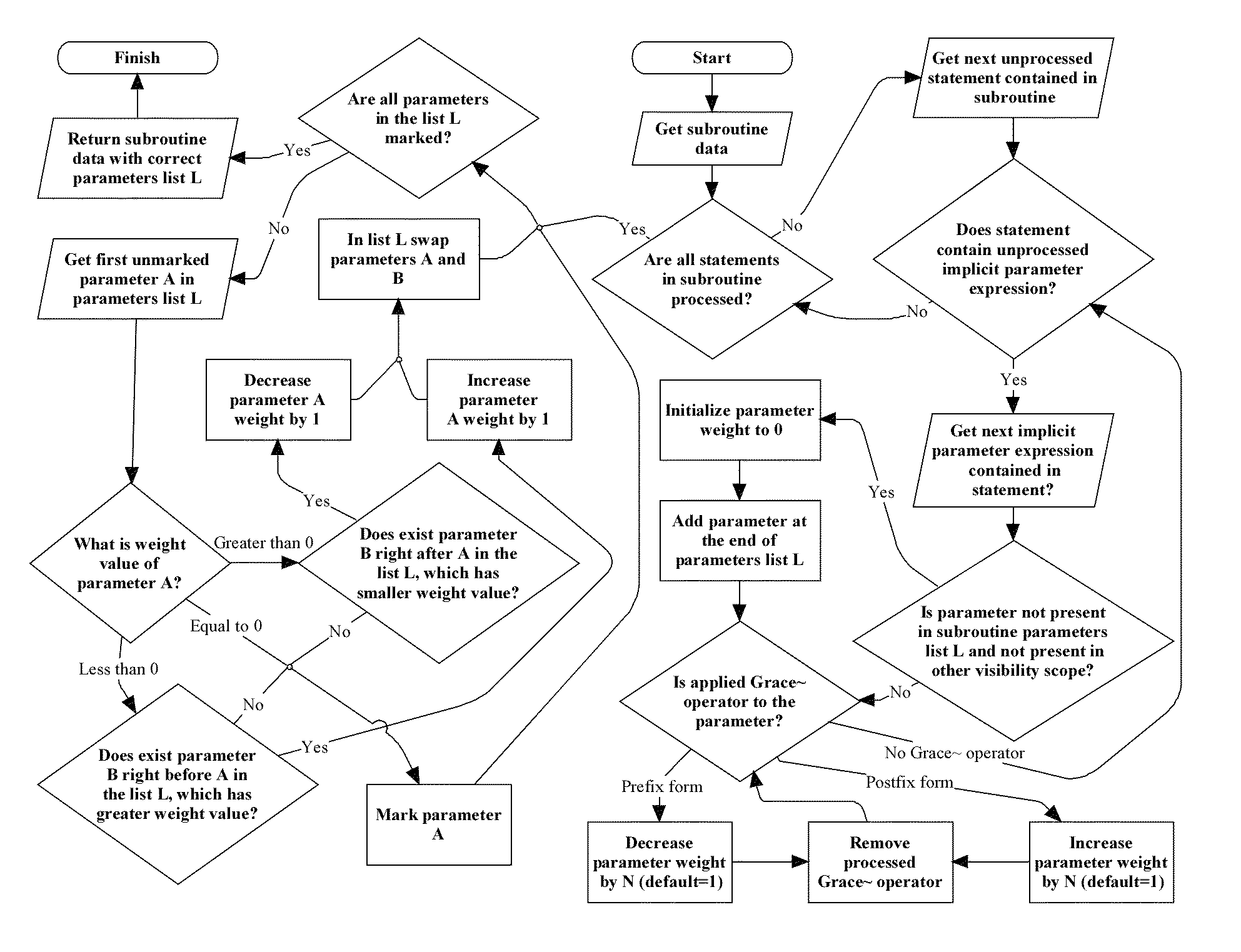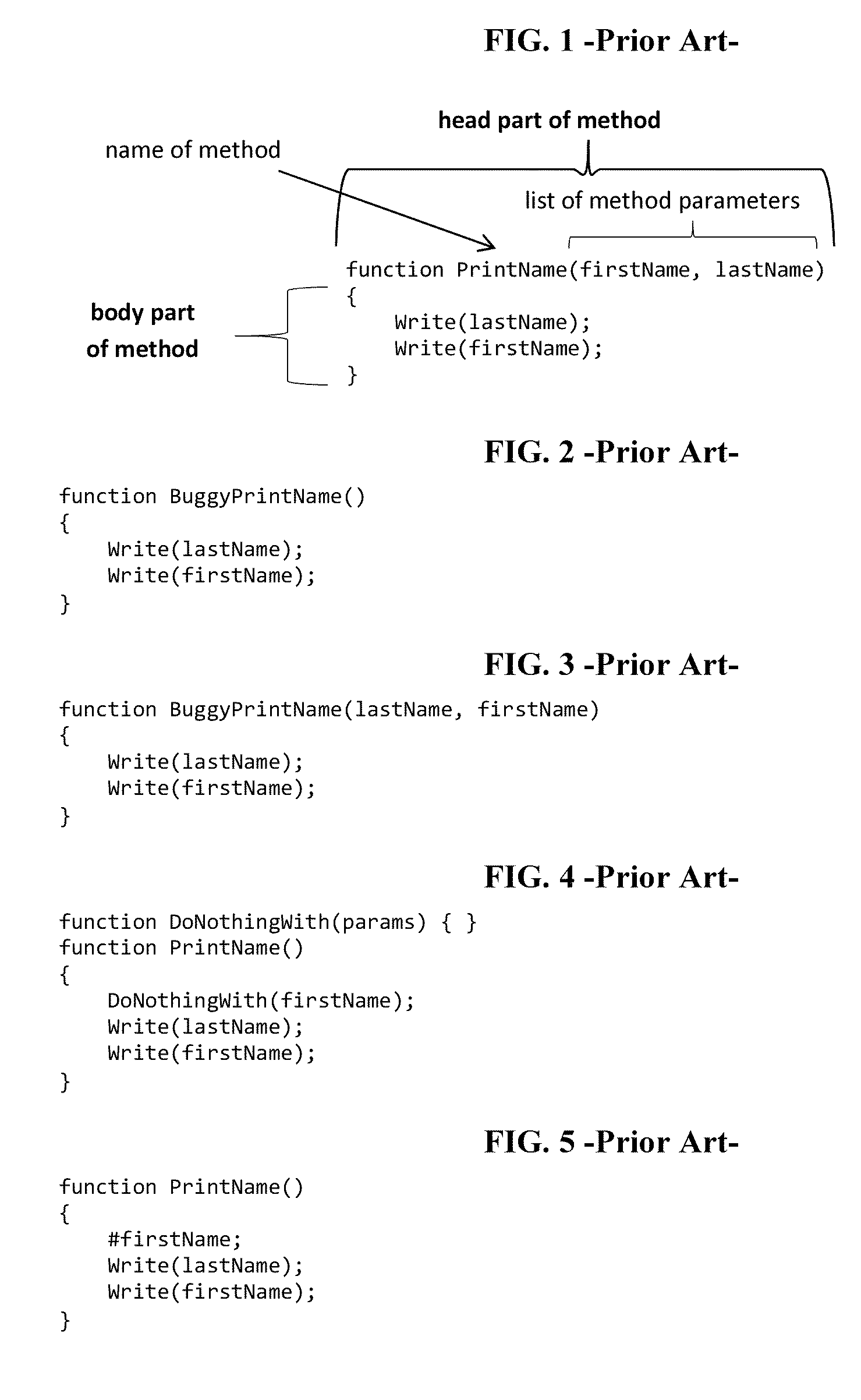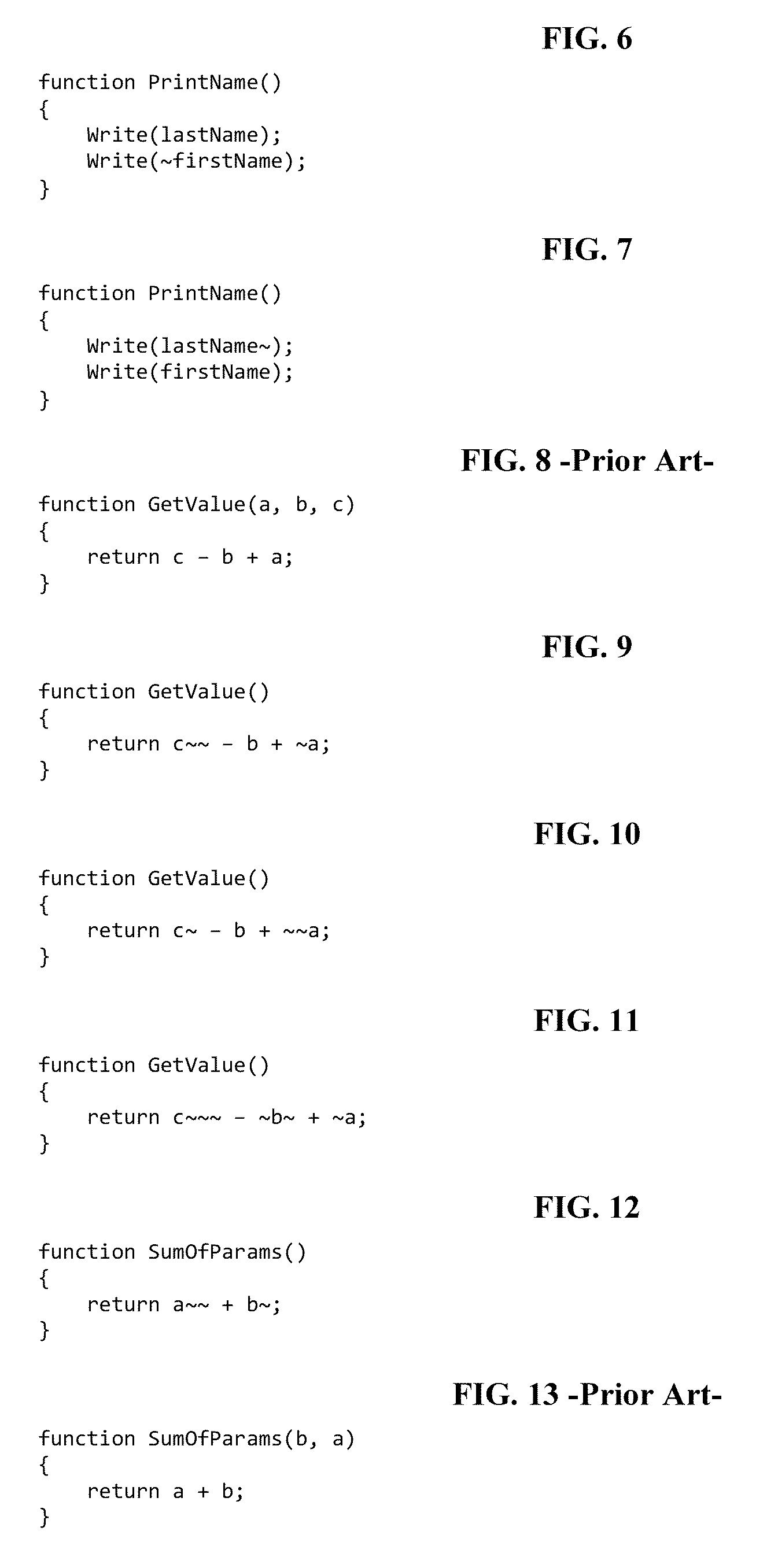Grace˜ Operator for Changing Order and Scope of Implicit Parameters
- Summary
- Abstract
- Description
- Claims
- Application Information
AI Technical Summary
Benefits of technology
Problems solved by technology
Method used
Image
Examples
Embodiment Construction
[0053]Operator ‘#’ places implicit parameters in the list of method parameters and operator ‘#’ usage is sequential—new parameters cannot be placed in the list of method parameters in other position than at the end of method parameters list. Situation can be changed by inventing operator Grace˜ (inspired by Grace Juang) which allows correcting order of implicit parameters in a non-sequential way. The author's preferred written form of Grace˜ operator in natural languages is the following: ‘Grace˜’ instead of ‘˜’.
[0054]Syntax of operator Grace˜ is the following:
[0055]1) Prefix form (operator Grace˜ is placed immediately before implicit parameter usage):[0056]˜parameter[0057]Prefix form of Grace˜ operator moves parameter one position towards first position in the list of method parameters. Example is shown in FIG. 6 where parameter ‘firstName’ position is swapped with parameter ‘lastName’ position in the list of method parameters.
[0058]2) Postfix form (operator Grace˜ is placed immedi...
PUM
 Login to View More
Login to View More Abstract
Description
Claims
Application Information
 Login to View More
Login to View More - R&D
- Intellectual Property
- Life Sciences
- Materials
- Tech Scout
- Unparalleled Data Quality
- Higher Quality Content
- 60% Fewer Hallucinations
Browse by: Latest US Patents, China's latest patents, Technical Efficacy Thesaurus, Application Domain, Technology Topic, Popular Technical Reports.
© 2025 PatSnap. All rights reserved.Legal|Privacy policy|Modern Slavery Act Transparency Statement|Sitemap|About US| Contact US: help@patsnap.com



